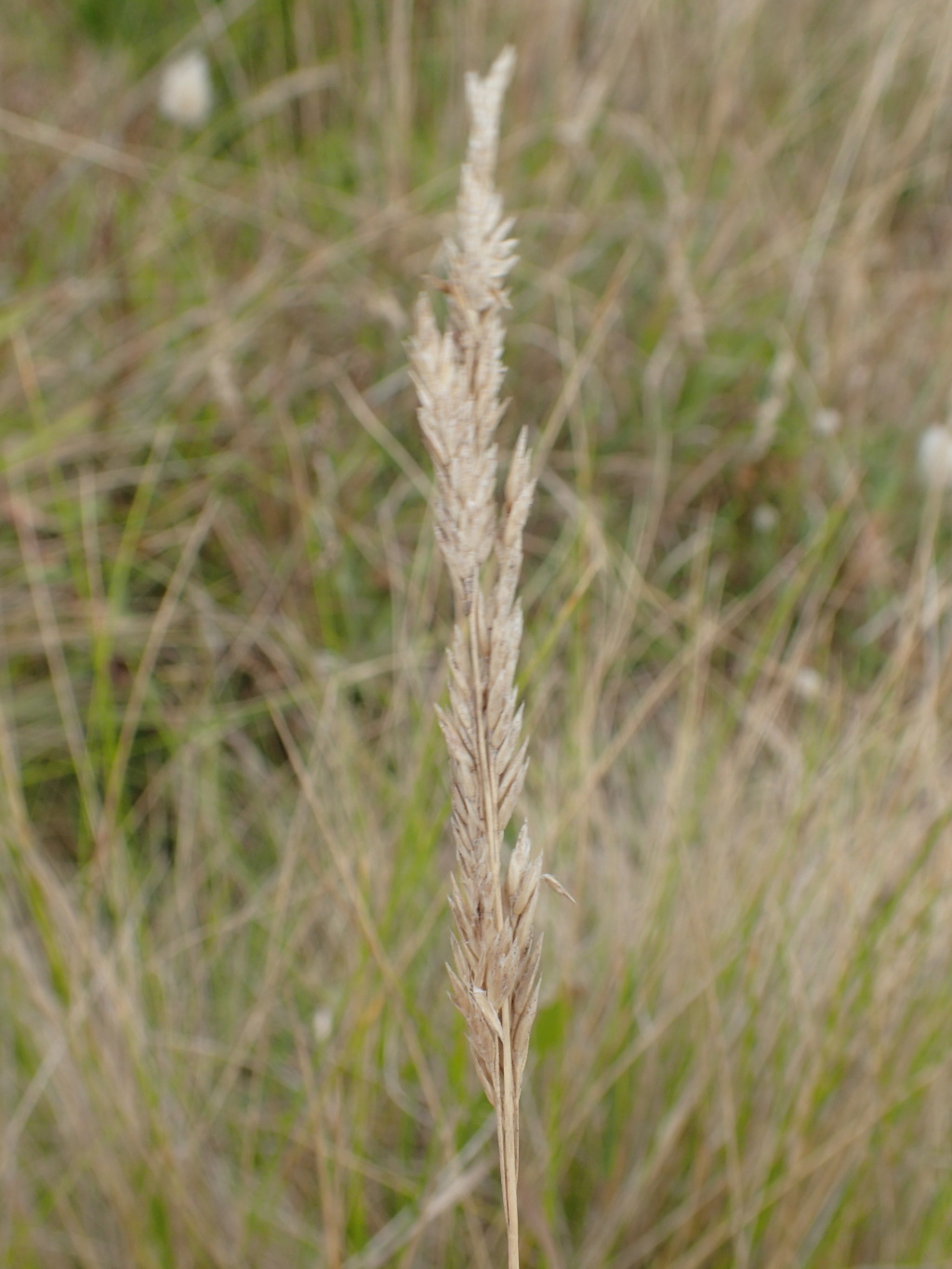Poa halmaturina
J.M.BlackCompact tufted or scaly-rhizomatous perennial, culms to c. 25 (–40) cm high, sometimes branching above the base. Leaves erect or often curved, sharp-tipped; sheath pale or dappled purple, smooth and glabrous, usually without obvious ribbing; blade closely inrolled, to c. 3(–10) cm long, c. 0.5 mm diam., smooth; ligule minute. Inflorescence a narrowly contracted panicle, to 4(–12) cm long. Spikelets 2–4-flowered, 4–6 mm long, often purplish; glumes 3-nerved, subequal, c. 3 mm long; lemma 5-nerved, oblong in profile 3–4 mm long, hairy along keel from about midway to base, lateral nerves and internerves glabrous to shortly hairy; web well-developed. Flowers Nov.–Feb.
GleP, VVP, GipP, OtP, WaP. Also SA, ?Tas.. Occurs along coasts from the SA border to at least Phillip Island, mostly on calcareous sands overlying dune limestone or sometimes on basaltic substrates.
Plants tentatively treated here as P. halmaturina have sometimes been regarded as P. poiformis var. ramifer due to the tendency to sometimes branch above the base, but they may be distinguished from that variety by the very short, compact inflorescence, generally shorter lemmas and finer, quite smooth leaves.
The name P. halmaturina is perhaps best restricted to a diminutive, tufted grass with extensive rhizomes that is known with certainty only from the type locality and environs near the south-western extremity of Kangaroo Island, South Australia. Plants treated here as P. halmaturina almost certainly warrant a new name.
Walsh, N.G. (1994). Poaceae. In: Walsh, N.G.; Entwisle, T.J., Flora of Victoria Vol. 2, Ferns and Allied Plants, Conifers and Monocotyledons, pp. 356–627. Inkata Press, Melbourne.
 Spinning
Spinning

